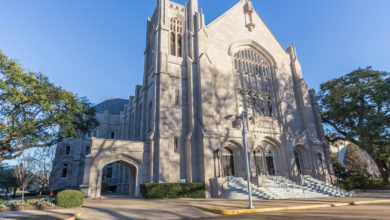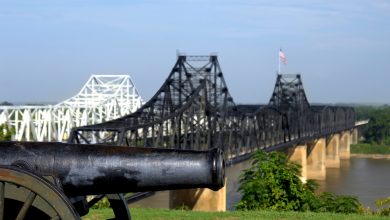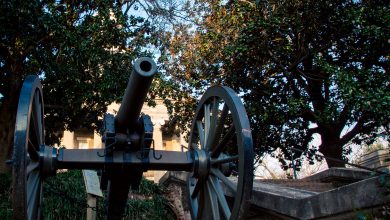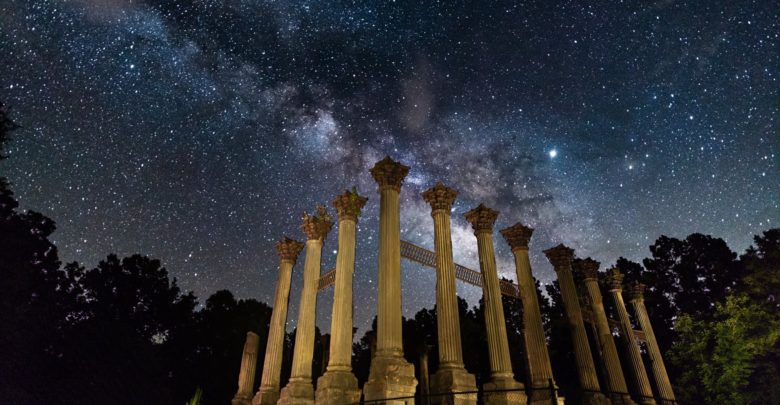
The magnolia serves as both the state tree and state flower of Mississippi, not to mention its mighty nickname. Continue reading to find out what else can be found in the “Magnolia State”.
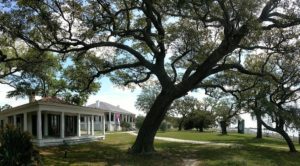
1. Beauvoir
Just off the shores of the gulf front town of Biloxi resides Beauvoir, The Jefferson Davis Home and Presidential Library. The one time President of the Confederate States of America and former military man originally retreated to the confines of this picturesque estate to draft his memoirs, before later purchasing the property from a friend and making it his home.
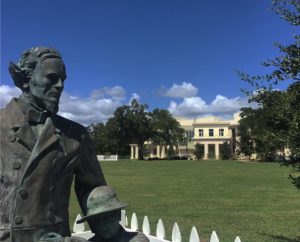
Built in 1852 by James Brown (an area planter, not the “Godfather of Soul”), the home – which stood on eight-foot-tall brick piers – was constructed of imported European materials, such as the Italian marble fireplaces and Welsh slate roof. In the years since Davis’ passing, the home has weathered several hurricanes, most notably Hurricane Katrina in 2005. The storm caused catastrophic damage to the property, washing away priceless artifacts and requiring more than $25 million in restoration costs. Today, the property serves as not just a remembrance of an important figure of the Civil War-era south, but also a testament to the American spirit and its enduring resolve to not only preserve its history but to rise above adversity.
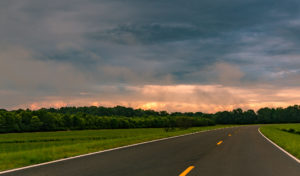
2. Natchez Trace Parkway
This 444-mile stretch of road winds its way from Mississippi through Alabama and into Tennessee, tracing (no pun intended) a historic American Indian trail that was largely used to increase commerce throughout the region. This path originally followed the migratory patterns of bison and other local game, but was ultimately utilized because its high, level ground afforded travelers good visibility and allowed for detection of and protection against any possible attacks. Construction began on converting the route into a parkway in 1939, but was not completed until 2005 when its last two remaining gaps were finished after funding became available. The path covers a total area of more than 50,000 acres and attracts over five million visitors annually, many of whom come to enjoy the largely undisturbed beauty of the region, as the area remains almost completely devoid of established communities.
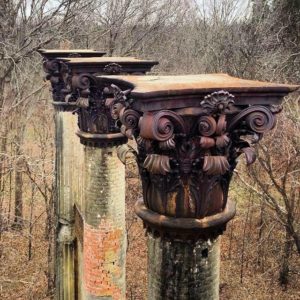
3. The Windsor Ruins
For nearly 30 years in the late 1800s (from 1861 to 1890), Mississippi’s largest-ever antebellum Greek Revival mansion stood in Claiborne County, a stone’s throw from the Mississippi River. After fire ravaged the property in the early 1890s, all that has remained are 23 towering Corinthian columns. At the time of its construction, 29 of these columns stood in support of the three-story, 17,000 square foot mansion, which housed upwards of 23 rooms – including a dairy, doctor’s office, and schoolroom. The fire that would ultimately decimate the property was caused by fallen ashes that ignited construction materials being used for repairs on the home. The columns that remain stand 40 feet tall and more than 3.5 feet in diameter, set among the surrounding forest area on this 2-acre plot that was designated a Mississippi Landmark in 1985.
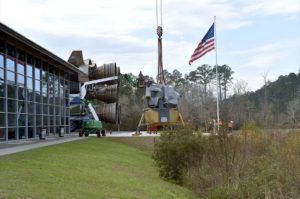
4. Apollo 13 Lunar Lander
The infamous and inspiring Apollo 13 mission was launched on April 11th, 1970 with the intention of being the third manned exploration of the moon. However, as chronicled in the acclaimed 1995 motion picture that bears its name, the mission was aborted after a mechanical failure and, after several harrowing days in space, the crew splashed safely back down to earth. It was an event that captivated the nation, and today visitors can gaze upon the type of lunar module these brave astronauts were forced to pilot back home. This 30-foot tall replica is displayed outside the Infinity Science Center in Pearlington, and was used as a training vessel by astronauts Jim Lovell, Jack Swigert, and Fred Haise (who served as a last-minute replacement for Ken Mattingly, who missed out on the mission due to concerns of exposure to rubella). Before early 2019, the display was previously located at the Mississippi I-10 Welcome Center in Hancock County.

5. Tupelo Buffalo Park and Zoo
As the largest zoo in the state, Tupelo Buffalo Park occupies nearly 200 acres in northeastern Mississippi. The park originally operated as a cattle ranch by Dan Franklin until the late 1990s, when he decided to thin out his herd and began replacing the livestock with buffalo. The land was officially converted into a zoo in 2001, and today is home to more than 250 animals, including llamas, white tigers, and ring-tailed lemurs. Some of its more famous residents include Tall Boy – at 19-feet, one of the tallest giraffes in the country – and Oliver, a capuchin monkey whose daring escapes made headlines back in 2007. Guests are invited to feed the goats, glide down the zip line, or experience the park’s signature attraction; the Bison Tour. This experience ferries guests through pastureland, where they can observe buffalo, zebras, and Watusi cattle up close and personal.
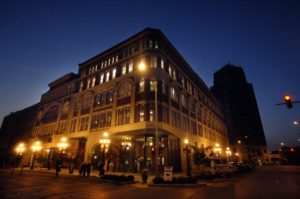
6. Riley Center
This Grand Opera House in Meridian was built in 1890 and restored to its Victorian-era glory via a 2006 project that saw its ownership transfer to Mississippi State University. Also known as the Mississippi State University Riley Center for Education and Performing Arts, the 950-seat theater has featured performances from such diverse artists as America, The Righteous Brothers, and Lonestar. This is a far cry from the productions that were originally showcased at the theater, which included German-language operettas and popular American melodramas.

7. The Mississippi River Basin Model
Accessible by the public in Buddy Butts Park, the Mississippi River Basin Model Waterways Experiment Station is a scale model of the region that covers an impressive 200 acres. The model was constructed over a period from 1943 to 1966, with much of the early work delegated to German and Italian POWs. From 1949 to 1973, this model was used to predict flooding in the area and to attempt to resolve potential problems before they arose. After the model had outrun its usefulness, a park was erected around the site but was not well-maintained in the ensuing years. It wasn’t until 2011, when a group of students from Louisiana State University initiated a revitalization program, that the model once again became a viable tourist attraction.

